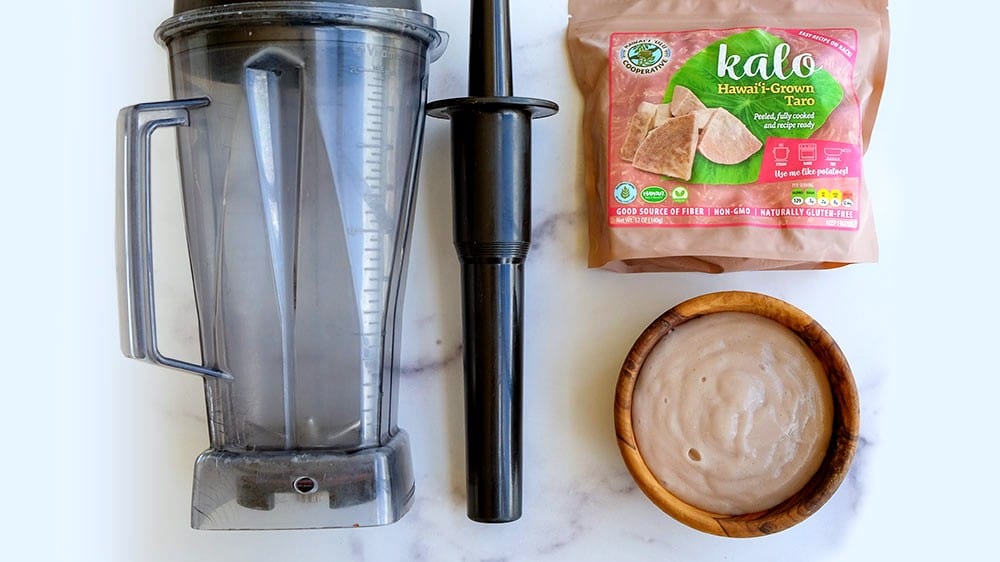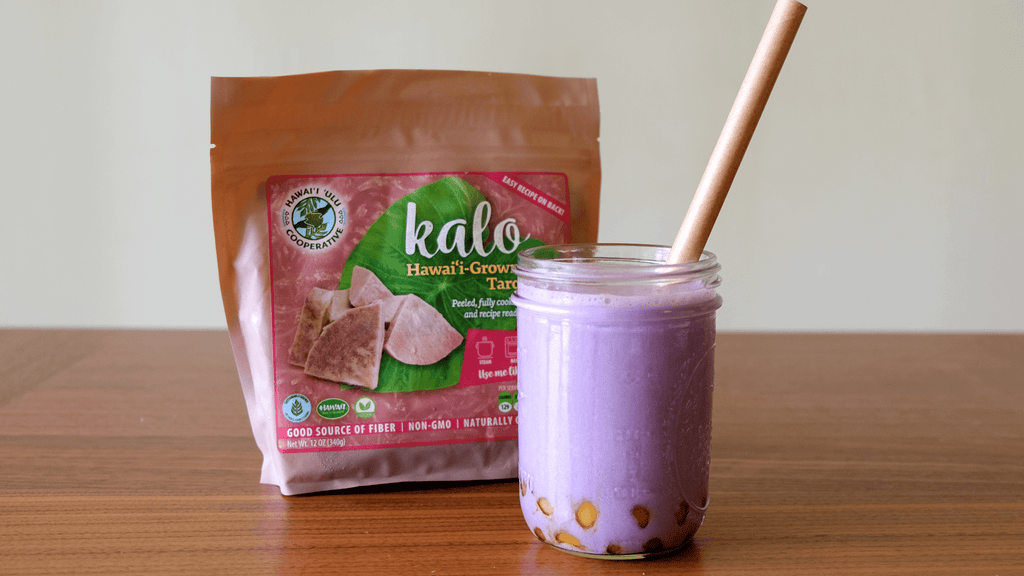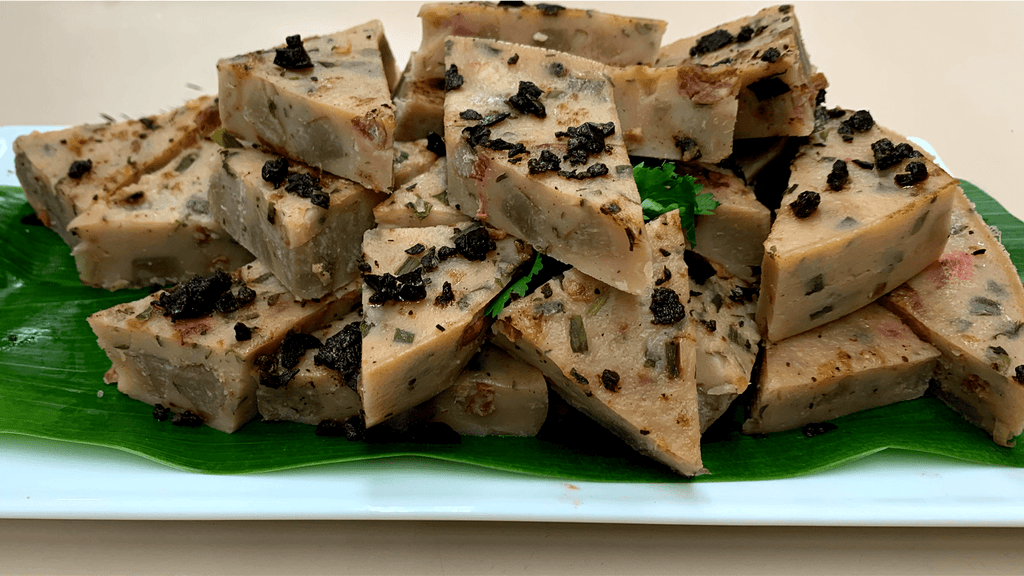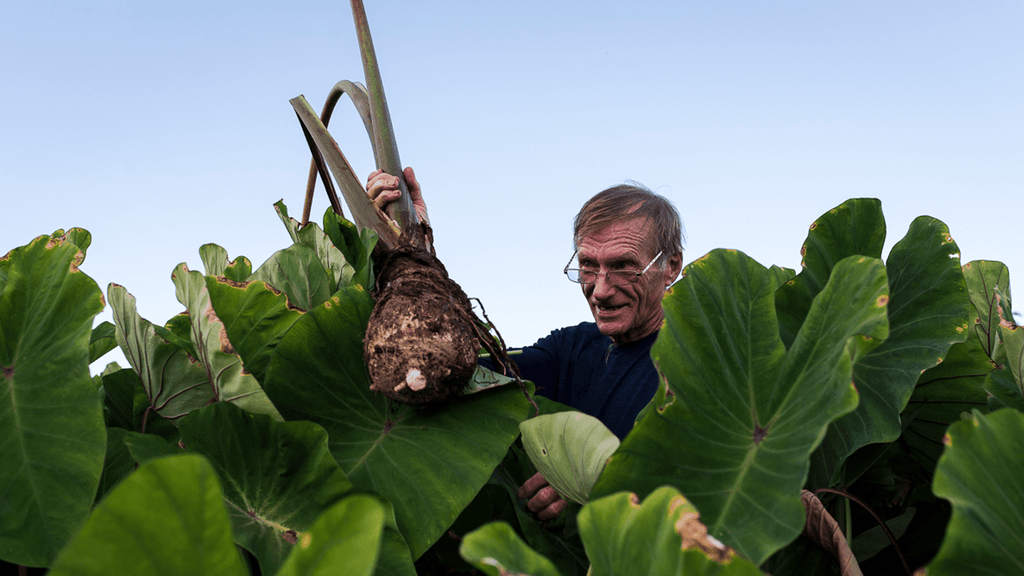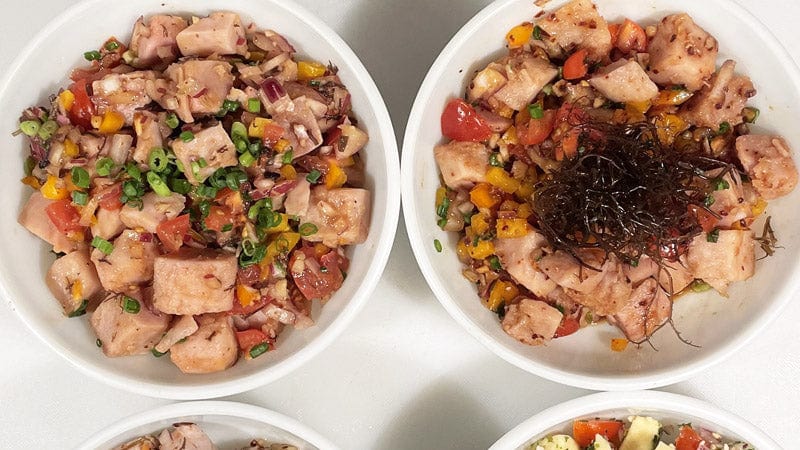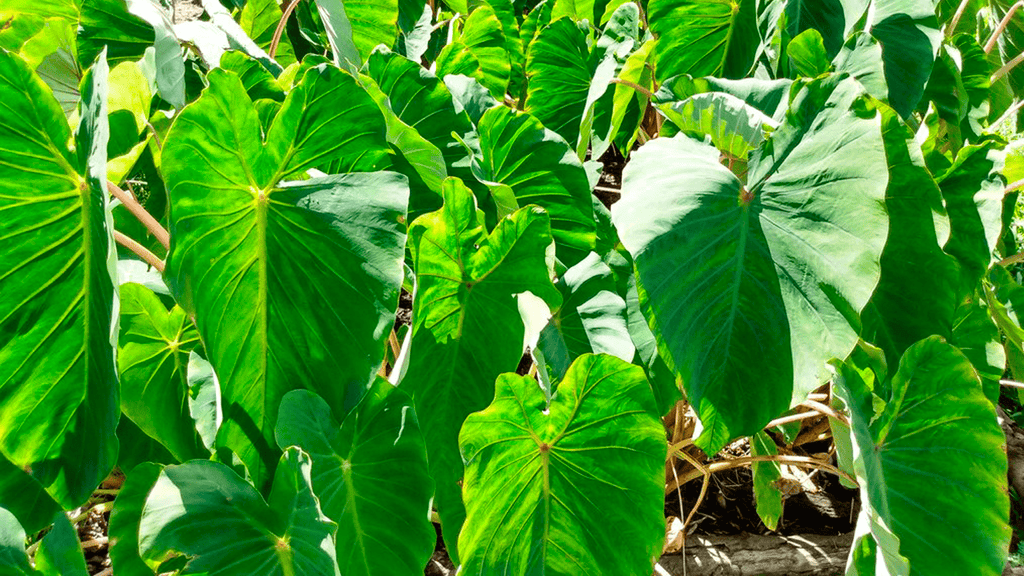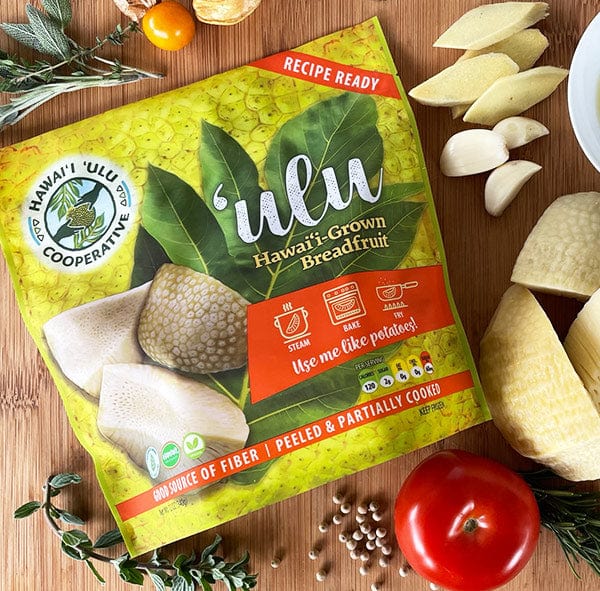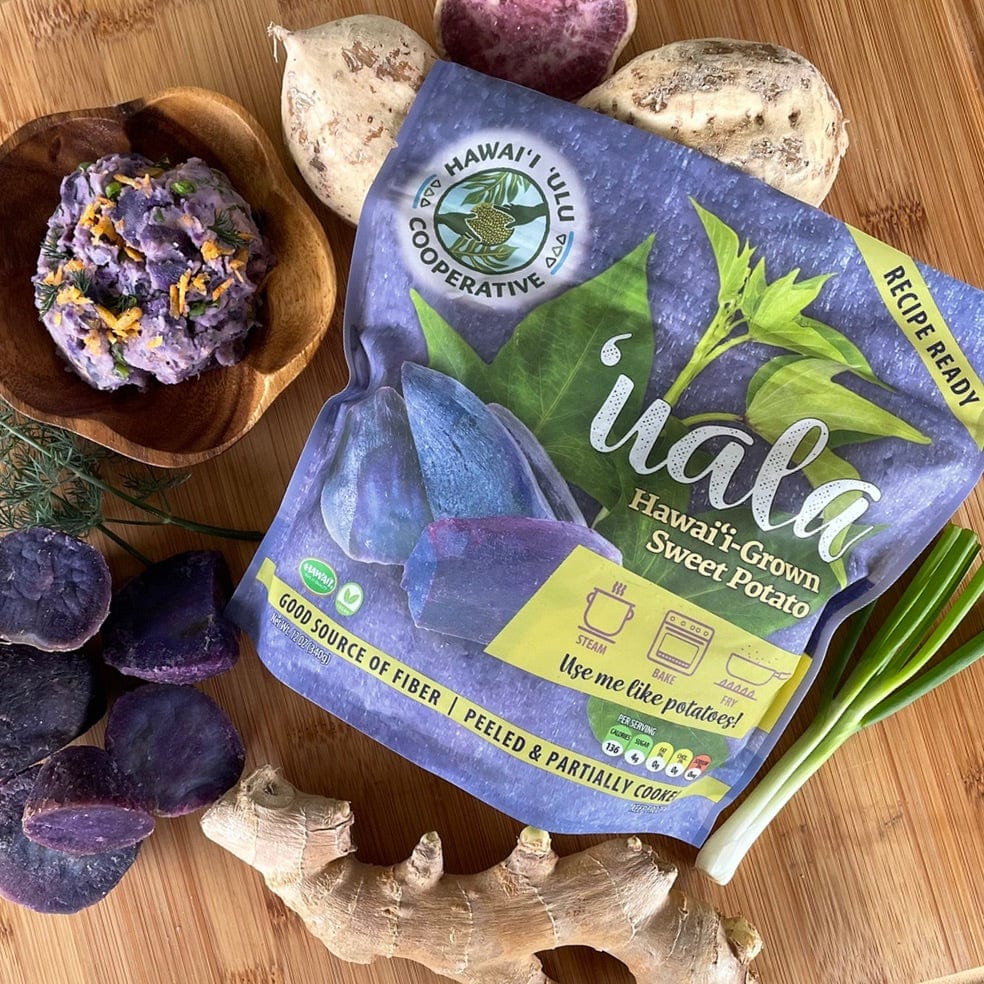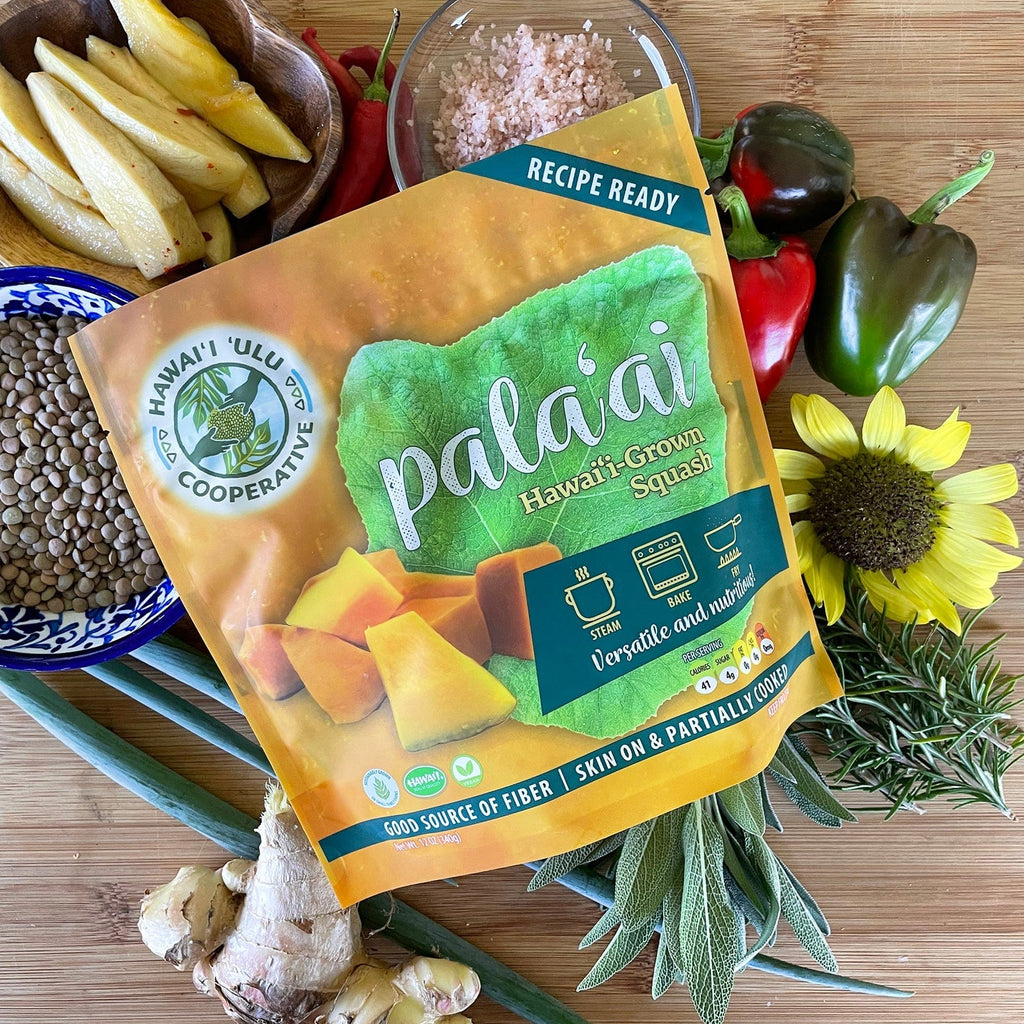Kalo in the Kitchen
The leaves, corm (root) and stem of the kalo plant are edible once fully cooked. While the leaves are used to make steamy, succulent laulau and lūʻau, the root is made into paʻiʻai, poi, sweet kūlolo or served up steamed as a side dish.
Substitute recipe-ready kalo for potatoes in stews and soups, incorporate it into batter for cakes and bread or puree it for boba tea. Be creative and see what kind of new dish you can innovate with this ancient Hawaiian crop.
Meet Our Farmers: Clarence Medeiros of ‘Aina Ahiu Farm
Meet Clarence Medeiros of ‘Aina Ahiu Farm, a Co-op member who recently hauled in a 50-pound kalo (lehua variety) to our Honalo processing facility.
Guinness World Records confirmed that it's the heaviest taro root ever harvested.
We asked Clarence what his secret was and he said that it was grown naturally with no fertilizer, only depending on rainwater, and by allowing certain plants to grow naturally, which are mostly kupukupu ferns and awapuhi ginger.
Growing kalo
For over one thousand years, lo’i (wetland taro patches) covered the hillsides and valleys of Hawaiʻi, with at least 300 unique Hawaiian taro varieties in cultivation. In this production method, huli (a leaf stalk with part of the corm, or root, still attached) is planted in muddy patches where freshwater flows. This method can take 6-12 months to produce. During this time the loʻi must be weeded regularly. Wetland taro is usually made into poi or paʻiʻai.
The second production method is upland farming, where the huli is planted into mounds of soil in mālaʻai (gardens or farms) and relies on rainfall and continuous mulching to grow. This method takes about 8-12 months to produce taro ready for harvest, and is often used primarily for the production of leaves. Upland taro corm is usually prepared steamed or baked and sliced into large chunks to serve.


